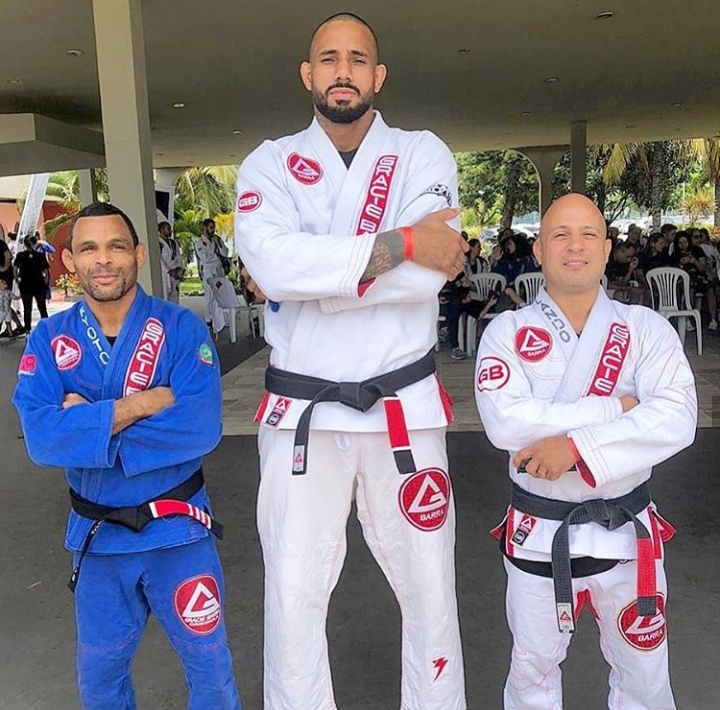GB Student Question: “Size doesn’t matter in jiu-jitsu. Is that true?”

A Gracie Barra student writes in asking about a common saying in the martial arts “Size doesn’t matter.”
ㅤ
Is this true? The short answer is yes, size matters – but if there is a way for a smaller, lighter individual to defeat a larger, stronger opponent, jiu-jitsu just might be the best way to do it.
ㅤ
Have you checked out the GB Online Instagram account?
https://instagram.com/graciebarraonline @graciebarraonline
ㅤ
First, let’s talk about the truth that strength and size ARE important in any physical competition between 2 people. When there is not a significant skill difference between the two, the larger, stronger individual will usually overcome the smaller of the two individuals.
ㅤ
This is the reason that we have weight classes in martial arts sports competitions. Furthermore, this is why we see fighters make great efforts to adhere to strict diets to cut bodyweight in order to compete in the lightest possible weight class that their body will safely allow. It is also the reason behind the extreme weight cuts that some high-level fighters go through in order to make weight at the lighter weight class in their sport.
ㅤ
An athlete moving up a weight class will most certainly notice the difference in power and weight of their heavier opponents.
ㅤ
You don’t need to be an elite BJJ competitor to test the theory of if size matters. The next time that you are paired in sparring with one of the larger members of your class and find yourself pinned underneath their side mount, feeling like a truck is parked on your chest, ask yourself if size matters?
ㅤ
Have you ever entered into a Kimura lock on a bigger, stronger training partner, only to have them simply straighten their arm and power out of your technique? Strength differences are a very real factor in combat sports.
ㅤ
When BOTH people have jiu-jitsu knowledge, the stronger, heavier opponent does have an advantage.
ㅤ
So, where does this idea of “Size doesn’t matter” in jiu-jitsu come from?
ㅤ
There are in fact conditions where someone who is highly technical can overcome a significantly stronger using jiu-jitsu. I’m sure that some of you bigger and very fit BJJ students can think back to your earliest experiences in jiu-jitsu when you were paired with a smaller, non-threatening-looking partner in sparring. “This should be easy” you confidently said to yourself. A moment later you found yourself tapping to a submission wondering what just happened?!?
ㅤ
When there is a great enough discrepancy in skill between the smaller individual who knows jiu-jitsu and a stronger, lesser experienced opponent, the ability for the smaller jiu-jitsu student to dominate the bigger opponent is astounding. More than one bigger, a new student has left the mats scratching their head wondering what just happened?
ㅤ
A key part of the history of Jiu-Jitsu was Grandmaster Helio Gracie famously being a much smaller, weaker man than his brothers who were teaching jiu-jitsu and being forced to adapt the techniques so that he could apply them using maximum leverage instead of muscle. These innovations started the development of the original techniques of the original Japanese masters into the jiu-jitsu that we practice today at Gracie Barra.
ㅤ
There are positions in jiu-jitsu that give a weaker, smaller opponent an advantage over a stronger opponent (ex. open guard, the back mount, some leg entanglements) and allow the lighter individual to apply the power of the strongest parts of their bodies (ex. the legs and hips) to the weakest parts of the stronger opponents body (ex. the elbow joints and neck).
ㅤ
Combine this basic strategy with timing, experience, and the knowledge that allows the smaller jiu-jitsu fighter to anticipate the moves of the stronger opponent, and jiu-jitsu can be the great equalizer between two opponents of different sizes.
ㅤ
See also on GB Blog: Top 3 Jiu-Jitsu Class No-No’s
